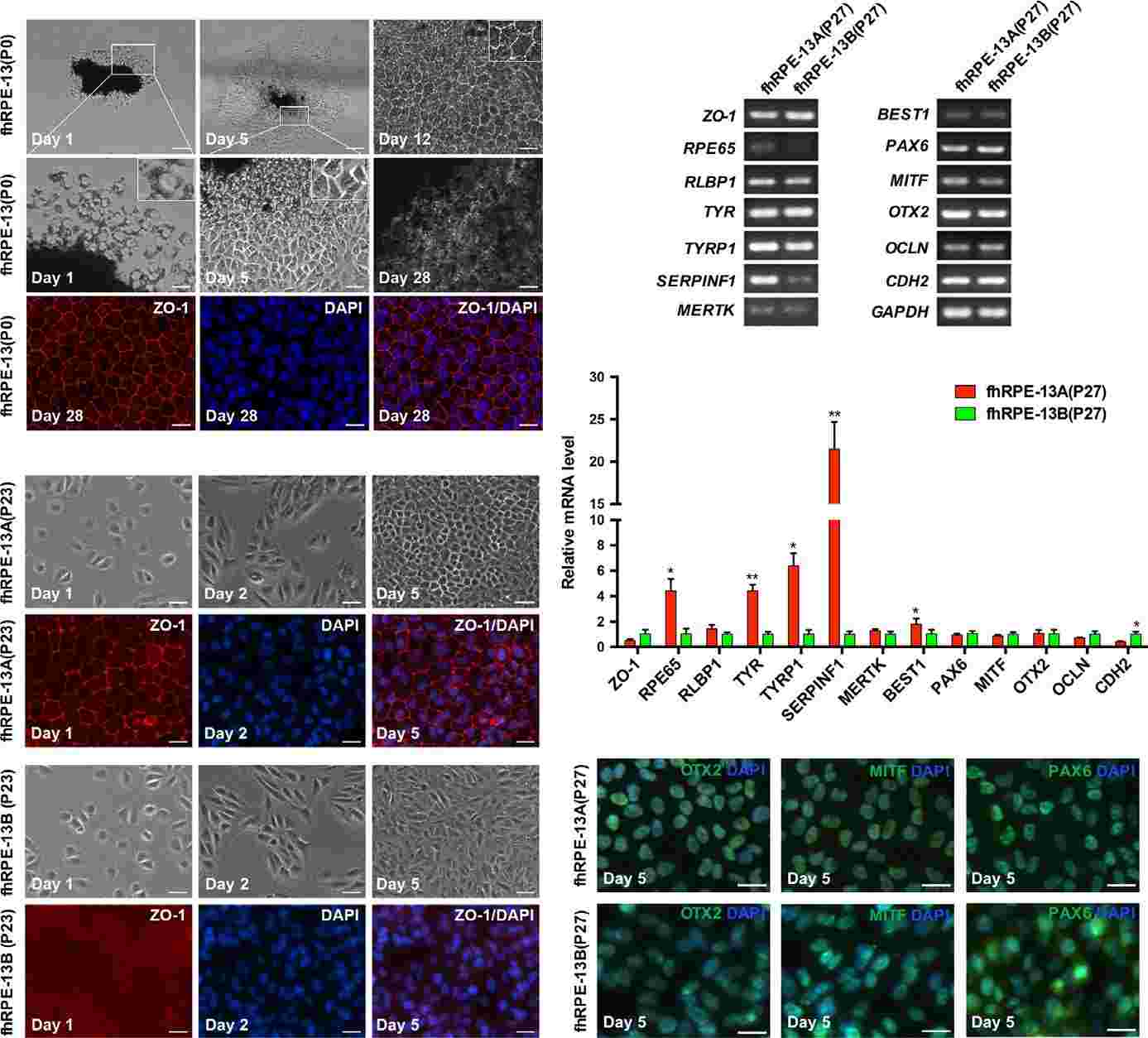Creative Biolabs is dedicated to providing advanced research tools and services in the field of biomedicine, especially in the area of drug development for age-related macular degeneration (AMD). Our team assists clients in screening potential candidate drugs by offering high-quality Tyrosinase-related Protein 1 (TYRP1) expression assay services.
TYRP1 is an enzyme associated with pigmentation, playing a crucial role in the biosynthesis of melanin in the human body. Research indicates that TYRP1 is particularly important in the context of AMD, mainly through the following aspects:
iPSC technology plays a revolutionary role in AMD research and drug discovery. Utilizing iPSC technology, we can generate iPSCs from somatic cells of AMD patients (e.g., skin or blood cells) and then differentiate these iPSCs into RPE cells. This approach provides a unique and powerful platform for studying the pathological mechanisms of AMD and developing new therapies for this disease. In the process of discovering age-related macular degeneration based on iPSC technology, the detection of TYRP1 expression is particularly critical. This is because more accurately determining the level of TYRP1 expression can provide key indicators for assessing the morphology, functional state of cells, and the effects of drug intervention.
Q1: How do you ensure the reproducibility and reliability of experiments?
A1: To ensure the reproducibility and reliability of experimental results, we follow strict Standard Operating Procedures (SOPs) for all experimental steps and validate the effects of drugs across multiple batches of iPSCs. Additionally, we use high-precision instruments and validated analytical methods for TYRP1 expression detection, with experienced scientists responsible for data analysis to ensure the accuracy and consistency of data.
Q2: What is the cost of the TYRP1 expression detection service?
A2: The cost of the service depends on the specific requirements of the project, including the number of samples to be tested, the complexity of the analysis, and whether additional custom services are needed. We recommend contacting our professional sales team to discuss project details in order to provide an accurate quote.
By comparing the expression levels of TYRP1 in the newly established fetal human RPE cell line fhRPE-13A with those in the existing ARPE-19 cell line, researchers have found that the expression levels of TYRP1 in fhRPE-13A cells are significantly higher than those in ARPE-19 cells. This result indicates that the fhRPE-13A cell line retains key biological functions of RPE cells, especially in melanin synthesis, making them valuable model systems for studying the physiology and pathological mechanisms of retinal pigment epithelial cells.
 Fig.1 Generation of fhRPE-13A and fhRPE-13B lines from a fetal human donor.1
Fig.1 Generation of fhRPE-13A and fhRPE-13B lines from a fetal human donor.1
Creative Biolabs offers you carefully crafted TYRP1 expression detection services, based on iPSC-derived AMD cell models. If you are interested in our services, please feel free to contact us. We look forward to working with you to advance your innovative projects.
Reference
For Research Use Only. Not For Clinical Use.